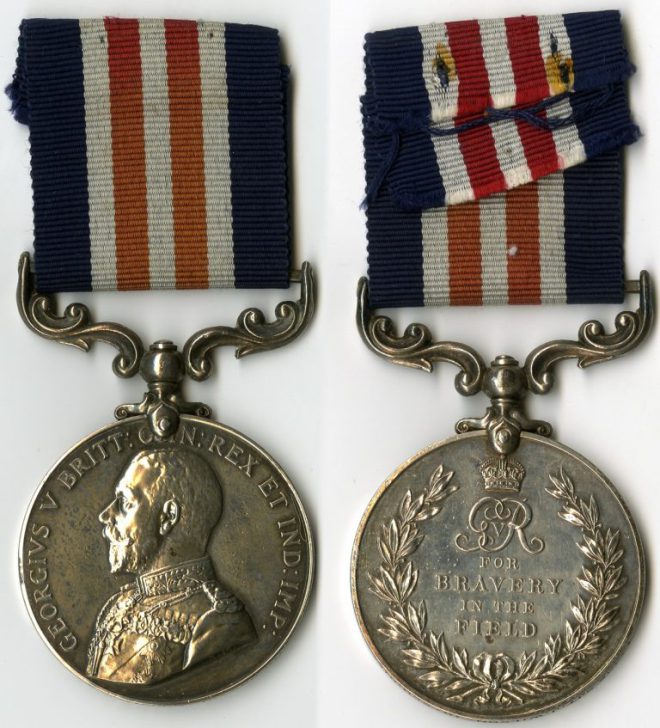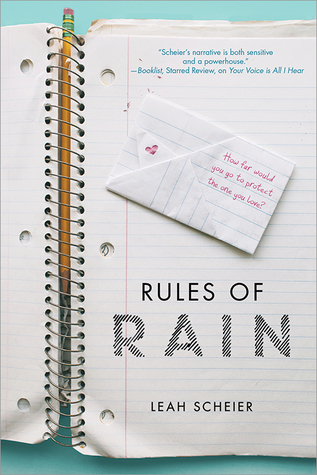
For Bravery in the Field – 21st to 24th December 1917.
Written by Barrie Duncan of the Low Parks Museum.
100 years ago, on 21st December 1917, a four-man patrol from the 10th Scottish Rifles left the relative safety of their trenches and crept into no man’s land. Their objective was to establish the condition of the enemy’s defences and to try and establish the identity of the German unit defending them. It wasn’t until three days later, on Christmas Eve 1917, that two of the patrol would drag themselves back into the British lines – wounded, dehydrated, and suffering from exposure and frost-bite – while the other two members were presumed dead.
The two men who made it back to the British trenches on 24th December 1917 were Sergeant John Wilson, and Lance Corporal John Thomson. Both men were awarded the Military Medal for their actions on the patrol, but within a few days Lance Corporal Thomson had succumbed to his wounds, and Sergeant Wilson would ultimately have both his legs amputated as a result of wounds exacerbated by frost-bite.
The patrol that set-out on 21st December 1917 comprised of four men; Second Lieutenant Ewen, Sergeant Wilson, Lance Corporal Thomson, and Private Aberdeen. Sergeant Wilson had led a similar patrol on the previous evening when a German post was encountered, but this was too well defended for them to try and rush in an effort to secure prisoners.
The patrol came up to what they thought was the German lines, but which actually turned out to be a small section of abandoned trench that the German forces were using as an observation and listening post.
The lone German sentry was successfully captured by the patrol and while returning to their own lines they encountered and were attacked by a German patrol comprising of between 12 and 15 men. In the ensuing fight, the German prisoner was killed, and all four men of the British patrol became casualties.
Lieutenant Ewen was thought to have been killed outright, and Private Aberdeen was badly wounded. Wilson and Thomson, both wounded, were able to get away, using the myriad of shell-holes as cover. Looking back, they saw the forms of Lieutenant Ewen and Private Aberdeen being dragged away towards the German lines.
Using the cover of darkness, Wilson and Thomson dragged themselves to what they thought was the British lines, only to find they had lost their way in the confusion of no man’s land and were actually near the parapet of the German trenches. It took them almost three days to make their way back to the British lines, as by this time Thomson was almost incapacitated through blood loss and the effects of exposure and Wilson had to physically drag him, even although he himself was wounded and suffering from frost-bite.
Having survived all this, the unfortunate pair were almost met with the cruel fate of being killed by their own men, as when they first reached the British lines they were fired upon by the wary soldiers manning the trenches. On Christmas Eve they met a British patrol who assisted them back to the 10th Battalion’s lines.
The fate of Lieutenant Ewen and Private Aberdeen would not be known by the Battalion for some time. Wilson and Thomson had assumed Lieutenant Ewen killed in the fighting against the German patrol.
He had in fact been wounded and taken prisoner. He recovered from his wounds, although he spent the remainder of the War as a prisoner in Germany. Ewen was a chemist and druggist in Aberdeen in civilian life; he had originally served as a private soldier in the Royal Army Medical Corps before being granted his commission and had only been serving with the 10th Scottish Rifles for a short time before commanding the fateful patrol.
Private Archibald Aberdeen was also wounded and taken prisoner. He succumbed to his wounds and died the next day, on 22nd December 1917. Private Aberdeen was buried by his German captors in a French cemetery behind their lines. In 1924, Private Aberdeen’s remains were reburied by the Imperial War Graves Commission in Cabaret Rouge British Cemetery among his comrades who died in the War.
Wilson and Thomson were awarded their Military Medals on 1st January 1918. Three days later, on 4th January, Lance Corporal John Barr Thomson died of his wounds and the hardships suffered during his ordeal in no man’s land. John Thomson was from Hamilton, Scotland, and was 38 years old at the time of his death. He is buried in Etaples Military Cemetery.
Sergeant John Wilson was also from Hamilton. He had joined the 6th Scottish Rifles, the local Territorial Force Battalion of The Cameronians (Scottish Rifles) in 1912. John was a compositor with his local newspaper, The Hamilton Advertiser. Embodied for active service when war was declared in August 1914, John first went to France with the 6th Scottish Rifles in March 1915.
Like Lieutenant Ewen, Sergeant Wilson was only transferred to the 10th Scottish Rifles a few months before he took part in the patrol. He had already been wounded in action, and had also served for a short time with an Officer Cadet School where he was considered for training as an officer. During the December patrol described above, Wilson had suffered a gun shot wound to the left thigh.
In addition he suffered severe frost-bite as result of spending so long in wet, freezing conditions. The damage to his legs was severe enough to result in him having both legs amputated, and he was discharged from the army on medical grounds in April 1918, aged 24.
Military Medal of Sergeant John Wilson, on display in Low Parks Museum (obverse – left, reverse – right)
If you would like to see more of these exhibitions, then you can see the fantastic display at the Low Parks Museum.
Advertisements Share this:




